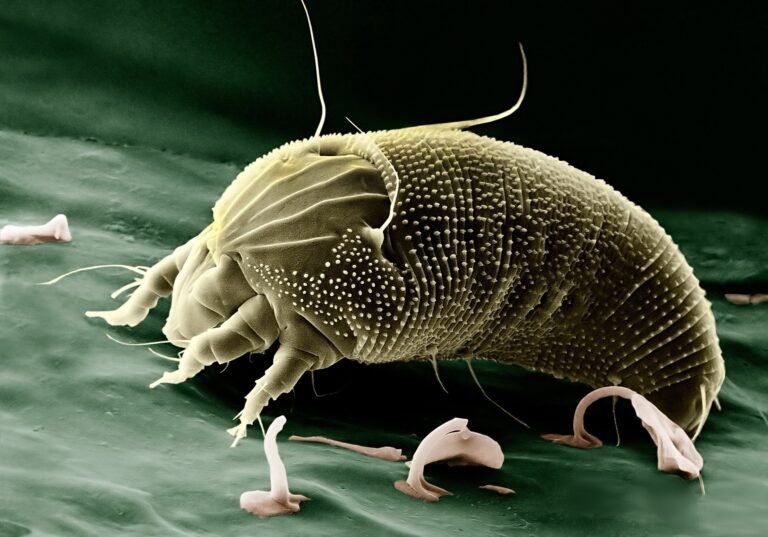Introduction
Having a garden can be a source of joy and relaxation, but it can also become a challenge when you have cats that love to explore and dig. Cats can cause damage to plants, leave behind unpleasant surprises, and even pose a threat to wildlife. If you’re wondering how to keep your cats out of the garden, there are several effective and humane methods you can try. In this article, we’ll explore some of the most practical and cat-friendly solutions to help you maintain a beautiful garden while keeping your feline friends safe and happy.
One of the first steps you can take to deter cats from entering your garden is to create physical barriers. This can be done by installing a fence around your garden or using chicken wire to create a barrier around individual plants or flower beds. Make sure the fence is tall enough to prevent cats from jumping over and bury the bottom part of the fence a few inches into the ground to prevent them from digging underneath. Additionally, you can use prickly plants such as rosemary or holly bushes around the perimeter of your garden, as cats dislike the texture of these plants and are less likely to try and cross them.
Another effective method to keep cats out of your garden is to provide them with an alternative space to play and explore. Cats are naturally curious animals, and if they don’t have an outlet for their energy, they are more likely to venture into your garden. Consider creating a designated area in your yard where you can set up a sandbox or a scratching post for your cats. This will give them a space of their own where they can dig and play, reducing their desire to explore your garden.
In addition to physical barriers and providing an alternative space, you can also use scent deterrents to keep cats away from your garden. Cats have a strong sense of smell, and there are certain scents that they find unpleasant. For example, citrus fruits such as oranges or lemons have a scent that cats dislike. You can place orange peels or lemon slices around your garden to create a natural barrier. Another option is to use commercial cat repellents that contain natural ingredients such as citronella or lavender. These repellents can be sprayed on the plants or applied to specific areas of your garden to discourage cats from entering.
Finally, it’s important to remember that cats are creatures of habit, and they are more likely to avoid areas that are noisy or unpredictable. Consider using motion-activated sprinklers or wind chimes in your garden to startle cats and deter them from entering. You can also place aluminum foil or chicken wire on the ground, as cats dislike the texture and will avoid walking on it. By creating an environment that is uncomfortable or unpredictable for cats, you can effectively keep them out of your garden.
In conclusion, keeping cats out of your garden doesn’t have to be a daunting task. By implementing a combination of physical barriers, providing an alternative space, using scent deterrents, and creating an uncomfortable environment, you can enjoy a beautiful garden while ensuring the safety and happiness of your feline friends.
1. Create a Dedicated Space for Your Cats
One of the best ways to keep your cats out of the garden is to provide them with an alternative space where they can play, explore, and relax. By creating a dedicated area for your cats, you can redirect their attention away from your garden.
Consider setting up a designated cat-friendly zone in your yard or even indoors. This can be a section of your garden with soft soil or sand where your cats can dig and scratch to their heart’s content. You can also add cat-friendly plants and toys to make the space more enticing for them.
When choosing a location for the dedicated space, keep in mind that cats enjoy privacy and a sense of security. Look for an area that is secluded and away from high-traffic areas. This will ensure that your cats feel comfortable and safe while they are in their designated zone.
In addition to providing a space for your cats to play, it’s important to consider their other needs as well. Make sure the area has access to fresh water and shade, especially if it is outdoors. Cats also enjoy perching and climbing, so consider adding a cat tree or shelves for them to explore.
If you have multiple cats, it’s a good idea to create separate spaces for each of them. This will prevent any territorial disputes and ensure that each cat has their own area to enjoy. You can use fencing or other barriers to create individual zones within the larger dedicated space.
By creating a dedicated space for your cats, you are not only keeping them out of your garden but also providing them with a place where they can engage in natural behaviors and fulfill their instincts. This will not only make your cats happier and healthier but also help to preserve the beauty of your garden.
2. Use Cat Deterrents
There are various cat deterrents available on the market that can help keep your cats away from your garden. These deterrents work by emitting sounds, smells, or sensations that cats find unpleasant.
One popular cat deterrent is the ultrasonic device. These devices emit high-frequency sounds that are inaudible to humans but can be irritating to cats. The sound frequency is specifically designed to target the sensitive hearing of cats, making it uncomfortable for them to stay in the area. Ultrasonic devices are easy to install and can cover a wide range, making them suitable for large gardens.
Another effective option to deter cats from your garden is motion-activated sprinklers. These sprinklers are equipped with sensors that detect the presence of cats and immediately release a sudden burst of water. The unexpected spray startles the cats and discourages them from entering your garden. Motion-activated sprinklers are not only effective in keeping cats away but also help in conserving water as they only activate when necessary.
If you prefer a more natural approach, you can try using citrus peels, coffee grounds, or vinegar as cat deterrents. Cats dislike the strong smells of these substances and are likely to avoid areas where they are present. Simply scatter citrus peels or coffee grounds around your garden or spray vinegar in strategic locations to create a barrier that cats will find unpleasant.
It is important to note that while these cat deterrents can be effective, they may not work for all cats. Some cats may become accustomed to the deterrents over time or may not be bothered by certain smells or sounds. Therefore, it may be necessary to try different deterrents or combine multiple methods to find what works best for your specific situation.
3. Install Physical Barriers
Installing physical barriers can be an effective way to keep your cats out of the garden. There are several types of barriers you can consider:
– Fencing: Install a cat-proof fence around your garden to prevent your cats from entering. Make sure the fence is tall enough and has no gaps that your cats can squeeze through. A sturdy fence made of materials like wood or metal can provide a physical barrier that cats are unlikely to climb over. Additionally, you can consider adding a cat-proof gate to further enhance the security of your garden.
– Netting: Use netting or mesh to cover your garden beds or specific areas where you don’t want your cats to go. This can help protect your plants while still allowing sunlight and rain to reach them. Ensure that the netting is securely fastened to prevent cats from pushing it aside or getting entangled in it. Consider using a fine mesh that cats cannot easily claw or bite through.
– Spiky surfaces: Cats dislike walking on spiky surfaces, so you can place materials like chicken wire, prickly twigs, or plastic carpet runners with the spikes facing up in areas where you want to deter them. This will make it uncomfortable for cats to walk or sit on those surfaces, discouraging them from entering your garden. However, be mindful of the safety of other animals or children who may come into contact with these spiky materials.
– Motion-activated sprinklers: Another option to consider is installing motion-activated sprinklers in your garden. These sprinklers are designed to detect the presence of cats or other animals and spray a burst of water to deter them. The sudden spray of water can startle cats and discourage them from entering your garden. This can be particularly effective if your cats are persistent and other methods have not been successful.
By implementing these physical barriers, you can create a cat-free zone in your garden, allowing your plants to thrive without the risk of being trampled or used as a litter box. Remember to regularly inspect and maintain these barriers to ensure their effectiveness and make any necessary adjustments as needed.
4. Provide Enrichment and Entertainment
Cats are curious creatures, and they often venture into the garden because they’re looking for stimulation and entertainment. By providing them with plenty of enrichment and entertainment indoors, you can reduce their desire to explore the garden.
Make sure your cats have access to toys that keep them mentally and physically engaged. Puzzle toys, interactive feeders, and scratching posts can help fulfill their natural instincts and keep them entertained. Additionally, spending quality playtime with your cats can help burn off their excess energy and prevent them from seeking excitement in the garden.
One way to provide enrichment for your cat is by creating an indoor jungle. You can set up shelves, cat trees, and climbing structures that allow your cat to explore vertical spaces. This not only provides exercise but also mimics their natural habitat, where they would often climb trees and survey their surroundings.
Another way to keep your cat entertained indoors is by offering a variety of toys. Cats have different preferences when it comes to toys, so it’s important to have a selection of interactive toys, such as feather wands, laser pointers, and crinkle balls. These toys can mimic the movements of prey and engage your cat’s hunting instincts.
In addition to physical toys, consider introducing puzzle toys that require your cat to use their problem-solving skills. These toys can be filled with treats or kibble, encouraging your cat to work for their food and keeping them mentally stimulated.
Lastly, don’t underestimate the power of playtime with your cat. Spending quality time engaging in interactive play with your furry friend not only strengthens your bond but also provides them with much-needed exercise. Use a variety of toys and play styles to keep things interesting and ensure your cat gets the mental and physical stimulation they need.
By providing a range of enrichment and entertainment options indoors, you can help satisfy your cat’s natural instincts and reduce their desire to explore the garden. Remember to rotate toys regularly to keep things fresh and exciting for your feline companion.
5. Use Natural Repellents
There are several natural substances that cats find unappealing and can help keep them away from your garden:
– Citrus: Cats dislike the smell of citrus fruits. You can scatter orange or lemon peels around your garden or use citrus-scented sprays to deter them. The strong aroma of citrus acts as a natural deterrent, effectively repelling cats from your garden. Additionally, you can create a homemade citrus spray by boiling water and steeping citrus peels in it. Once cooled, strain the mixture and pour it into a spray bottle. Spraying this solution around your garden will effectively keep cats at bay.
– Herbs: Certain herbs, such as lavender, rosemary, and rue, have strong scents that cats dislike. Planting these herbs in your garden can help keep your cats away. Lavender, with its calming fragrance, not only repels cats but also adds a pleasant aroma to your garden. Rosemary, with its woody scent, acts as a natural deterrent, deterring cats from venturing into your garden. Rue, with its pungent smell, is known to repel cats effectively. By strategically placing these herbs in your garden, you can create a cat-free zone while enjoying the benefits of their delightful scents.
– Coleus canina: Also known as the “scaredy-cat plant,” coleus canina emits an odor that cats find offensive. Planting this herb in your garden can act as a natural deterrent. The pungent smell of coleus canina is similar to that of a skunk, which cats instinctively avoid. This plant is known for its ability to keep cats away, making it an excellent addition to your garden if you’re looking to create a cat-free space. Its small purple flowers and attractive foliage also make it a visually appealing choice for your garden.
By incorporating these natural repellents into your garden, you can effectively keep cats at bay without resorting to harmful chemicals or methods. Creating a cat-free space not only protects your plants but also ensures a peaceful and enjoyable outdoor environment for you and your family.
6. Provide a Safe Outdoor Enclosure
If you want to allow your cats to enjoy the outdoors while keeping them away from your garden, consider building or purchasing a safe outdoor enclosure. These enclosures, also known as catios, provide a secure space where your cats can experience the sights, sounds, and fresh air of the outdoors without being able to roam freely.
A well-designed catio should have sturdy walls, a roof to prevent escape, and plenty of platforms, perches, and toys to keep your cats entertained. It’s important to ensure that the enclosure is escape-proof and that your cats have access to shade and water.
When designing or purchasing a catio, it’s essential to consider the size and needs of your cats. The enclosure should be spacious enough for them to move around comfortably and engage in natural behaviors like climbing and jumping. It’s a good idea to include different levels and hiding spots to mimic the environment they would encounter in the wild.
Additionally, the materials used for the catio should be safe for your cats. Avoid using toxic substances or materials that could harm them if ingested. Opt for durable materials that can withstand the elements and regular use.
Another important aspect to consider is the location of the catio. It should be placed in an area that provides a balance between sunlight and shade. This will allow your cats to enjoy the warmth of the sun while also having a cool spot to retreat to when needed. If possible, position the catio near a window or a door so that your cats can easily access it from inside the house.
Furthermore, it’s crucial to regularly inspect the catio for any potential hazards or damage. Check the walls, roof, and flooring for any signs of wear and tear, and promptly repair or replace any compromised areas. Keep an eye out for sharp edges, loose screws, or other objects that could pose a risk to your cats.
By providing a safe outdoor enclosure, you can give your cats the best of both worlds – the freedom to enjoy the outdoors and the security of a controlled environment. Not only will this enrich their lives, but it will also give you peace of mind knowing that they are protected from potential dangers and hazards.
Discover more from Gardening with Ecorganicas-Source for Organic Gardening Tips
Subscribe to get the latest posts sent to your email.








